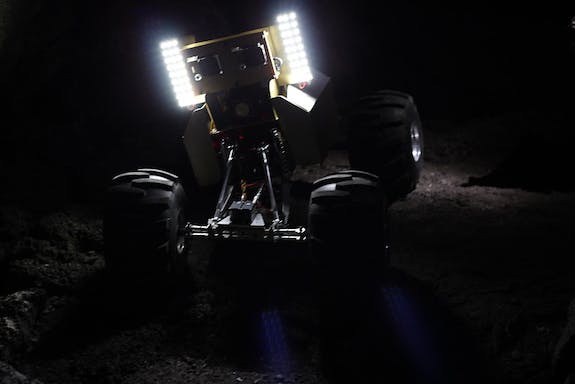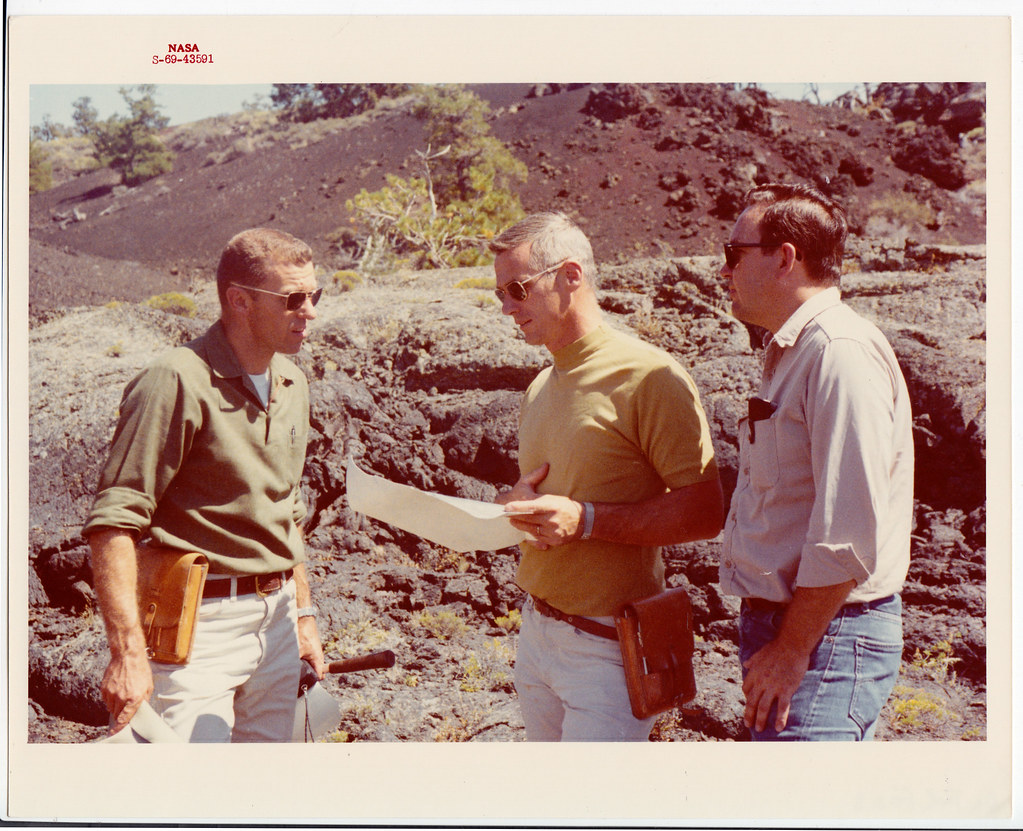When people think of NASA, Idaho doesn’t exactly jump to mind.
Cape Canaveral and the Kennedy Space Center are in Florida. Johnson Space Center and Mission Control are in Texas. And the Jet Propulsion Laboratory is in California.
But Idaho’s contributions to space exploration date back to the early years of the space race and continue today.
In fact, when NASA launches the Perseverance mission to Mars this summer, its rover’s heat and power will come from a radioisotope power system (RPS) assembled and tested at Idaho National Laboratory.
Craters of the Moon
Idaho’s relationship with NASA began in 1969, the same year Neil Armstrong and Buzz Aldrin walked on the moon.

That August, NASA sent four Apollo astronauts, including Alan Shepard, to Craters of the Moon National Monument for geology training.
In the Apollo days, NASA’s central mission was to get astronauts where they were going and return them alive. “Only one scientist was sent to the moon,” said Idaho State University volcanologist Shannon Kobs-Nawotniak. “The rest were all test pilots. Today, things are driven much more by science.”
The former test pilots would be collecting rocks on the moon’s Fra Mauro Highlands, and NASA mission planners decided Craters of the Moon would be a good place for them to practice spotting scientifically interesting rock specimens.
NASA still uses Craters of the Moon for research. In 2014, scientists from the Ames Research Center began a project called FINESSE (Field Investigations to Enable Solar System Science and Exploration) to conduct field experiments and procedures that may be used by astronauts on the moon and Mars. A second project, BASALT (Biologic Analog Science Associated with Lava Terrains) examines terrain similar to the surface of Mars.

“We have the benefit of so much more technology,” said Kobs-Nawotniak, geology co-lead on FINESSE and deputy principal investigator on BASALT. With tools such as spectral imagery and more sophisticated satellites, “we have a much better sense of what we’re looking for,” she said.
FINESSE’s focus on volcanic terrain applies to both the moon mission slated for the mid-2020s and Martian exploration in the 2030s. BASALT focuses on how water-rock interactions might affect habitability for microbial organisms on Mars.
In addition to her research, Kobs-Nawotniak engages with students all over the country, including the Idaho Space Grant Consortium, which funds Idaho students who are awarded NASA internships. Based at the University of Idaho in Moscow, the consortium was established in 2009 with a $1 million grant for STEM education.
Partnering in STEM education
NASA has emerged as a vital partner for STEM education in Idaho, especially in the state’s underserved rural communities and on Native American reservations.

Ed Galindo, a part-time professor at Idaho State University in Pocatello, deserves a lot of the credit. A member of the Yaqui tribe, Galindo first gained NASA’s attention when he formed the Native American Science Association. Realizing the agency might be sensitive to another group using its name, he went right to the head of NASA for permission. This was the beginning of a warm relationship.
In 1997, Galindo took Fort Hall students to Houston for a ride on NASA’s notorious “Vomit Comet,” a Boeing KC-135A that makes parabolic arches to give passengers the sensation of zero gravity flight.
“None of the Native American students lost it on the plane,” Galindo said. “I just told the students to have fun.”
A series of student-designed NASA experiments followed, including “Spuds in Space,” in which the Fort Hall students planted Idaho potatoes in JSC Mars-1, a soil mix designed to emulate everything scientists knew about the Martian soil. The test, done on the STS-Atlantis in 2000, examined how soil would support plant growth in space.
“Fun With Urine” went aboard STS-Endeavor in 2001 to learn whether urine could serve as the basis of usable “space water.” In 2003, the club launched its sequel, “More Fun With Urine,” in which students sought to learn whether their “space water” could be mixed with paint pigment and American Indian dyes to make art.
Other students around Idaho have put science projects in space. Gary Lam, a sixth-grade teacher at Potlatch Elementary School, helped his class get the “Pepper Oil Surprise” experiment on the International Space Station. (Watch the YouTube video here.)
“We wanted to see if water and oil would separate in space,” said Lam. “We got hold of someone at NASA who told us, ‘You should be OK because they do have pepper oil on board to spice up their food.’”
Power and heat for Mars, deep space
Since 2003, INL researchers and engineers have participated in four missions for NASA.
That includes support for the radioisotope heater units that warmed the Spirit and Opportunity rovers during the 2003 Mars Exploration Rover mission.
More recently, INL has assembled and tested the systems that power and heat spacecraft and rovers as they gather data.
In 2006, the Pluto New Horizons spacecraft launched with a radioisotope power system provided by INL. That system is still generating electricity and heat as the craft approaches the edge of the solar system. Nearly four years after passing Pluto in 2015, New Horizons flew by and photographed Ultima Thule in the Kuiper Belt, the most distant object in the solar system ever explored by humans— 4.1 billion miles away.
The second RPS assembled and tested for NASA at INL left Earth in 2011 on NASA’s Curiosity rover.
Finally, INL delivered an RPS for the latest Mars Rover, Perseverance, which is scheduled for launch in late July or early August 2020. Once the rover lands, its RPS will provide a source of power and heat for the rover’s instruments and onboard systems as it explores the surface.
Center for Space Nuclear Research
Idaho National Laboratory is home to the Center for Space Nuclear Research (CSNR), which invites undergraduate and graduate-level students to work with INL scientists on space nuclear research of potential interest to NASA. CSNR researchers have studied a tungsten-based fuel for use in a nuclear thermal rocket that emits a clean, nonradioactive exhaust.
NASA luminaries and supporting players from Idaho

Barbara Morgan of McCall was the first teacher in space onboard the STS-Endeavor in 2007 for a mission to the International Space Station. She served as robotic arm operator and transfer coordinator, directing the transfer of over 5,000 pounds of cargo to the ISS and bringing home over 3,000 pounds.
John Herrington of Lewiston, a member of the Chickasaw Nation and the first Native American in space, flew on the shuttle Endeavor in 2002. After leaving NASA and retiring from the U.S. Navy in 2005, he earned a Ph.D. in education from the University of Idaho.
Nick Bernardini, now at JPL, is the planetary protection lead on Curiosity and the 2020 Perseverance mission. He earned his Ph.D. in microbiology, molecular biology and biochemistry at UI in 2008.
Jason Barnes, an associate professor at UI, is a founding member and deputy principal investigator on NASA’s Dragonfly project, the robotic rotorcraft lander planned to launch for Saturn’s Titan moon in 2025.
David Atkinson, UI professor of electrical engineering from ’89 to ’16, is now senior systems engineer at JPL on the Saturn Ice Giant Probe Mission.





